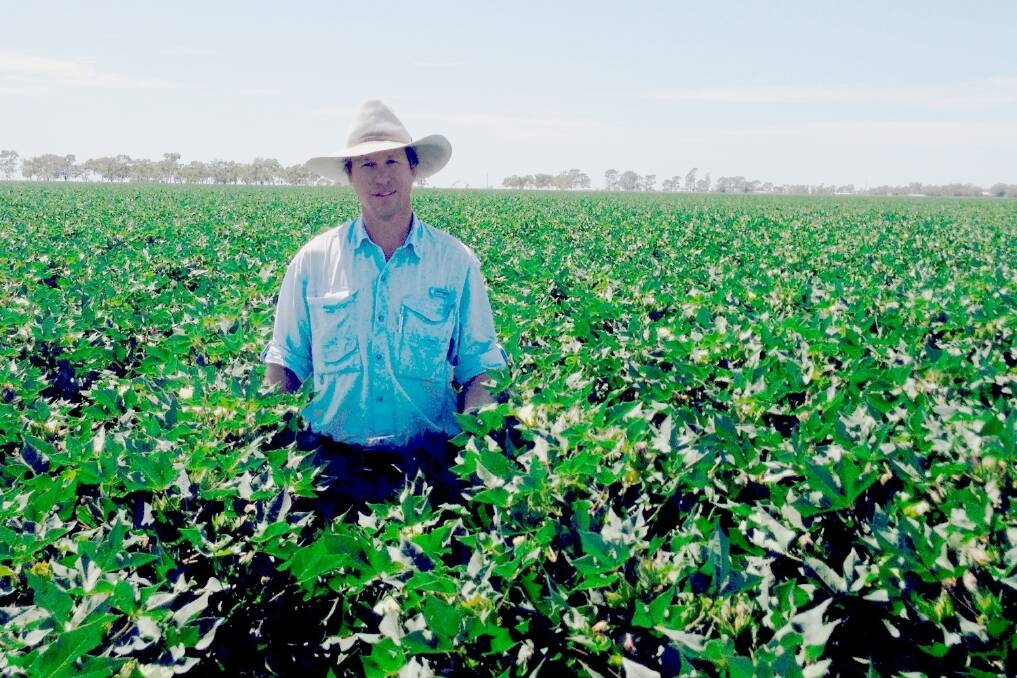
AUSTRALIAN cotton growers will be the first in the world to grow Bollgard III commercially if the technology is approved this year.
Monsanto has submitted its application to the Australian Pesticides and Veterinary Medicines Authority (APVMA) for approval, which could see Bollgard III grown in large areas for the 2016-17 cotton season.
The crop is already being grown in more than a dozen trial sites across all cotton valleys in NSW and Queensland.
Monsanto technical development manager Tony May said the three-gene product would still focus on pest resistance management.
"Australia's got a real focus on controlling pests because pests are a bigger problem here and we're proactive in terms of managing resistance," Mr May said.
"Even though we haven't seen any yield issues or resistance to Bollgard II, having a three-gene product will make it much more difficult for Helicoverpa moths to develop resistance."
Monsanto has worked closely with the Cotton Australia's Transgenic and Insect Management Strategies (TIMS) committee and technical panel to develop the technology, with a result expected by the end of the year.
"We have reasonable area being grown this season for pure seed production and trials but it's grown under permits," Mr May said.
Farmers can expect major changes to the Monsanto resistance management plan if Bollgard III is approved, such as a reduction in the refuge crop grown alongside the crop.
Currently, dryland and irrigated cotton growers are required to plant pigeon pea or unsprayed, conventional cotton as a refuge for Helicoverpa moths.
Under Bollgard III, the pigeon pea crop is expected to be reduced from five per cent of the cotton crop to 2.5pc.
Planting windows will also be extended, from the beginning of August to late December.
"At the moment the planting windows are there to reduce the number of generations of moths exposed to the plants," Mr May said.
"Some people want to plant early or late to take advantage of rainfall, and if the rainfall is outside the planting window it cuts them out from growing Bollgard cotton.
"They either plant conventional cotton, which many people don't want to do, or sorghum."
There will be more opportunity for dryland cotton, depending on rainfall, outside normal planting periods.
One of the big jobs following picking, pupae busting, could become a practice of the past.
Pupae busting involves cultivation to a depth of 10 centimetres to destroy any pupae over-wintering within four weeks of the crop being harvested.
"Any pupae in the crop at the end of the season has a higher risk of carrying resistance," Mr May said.
"What we found is if you have an early crop you're probably defoliating and harvesting before there's any over-wintering occurring."
Crops will be identified as low or high risk, depending on defoliation and picking times.
Mr May said Bollgard III would give growers more flexibility.
"Sometimes we're making growers pupae bust and there's not really a need for it," he said.
"With early crops it's probably unlikely pupae busting has been an effective tactic but for late crops it's still very important.
"With Bollgard III, if you defoliate your crop before the end of March you don't have to pupae bust.
"For many of the northern valleys, St George, Goondiwindi, Moree and Narrabri, a large proportion of crops may not need to be pupae busted."
For the valleys that will continue to pupae bust, it won't be as much work.
Positive Moree trial
BOLLGARD III cotton being grown as part of a trial on "Keytah", 40 kilometres west of Moree, is performing well, comparable with other cotton crops.
"Keytah" general manager Nick Gillingham said the property was also involved in a row spacing trial and a Monsanto gene technology trial looking at types of genetic modification.
It's also had major irrigation trials in previous years.
"The Bollgard III appears to be growing well but the proof will be in the picker," he said.
Mr Gillingham (pictured) said widespread uptake of the technology would depend on the Bollgard III licensing, but there had been plenty of interest.
"In the longer term it'll give us a more robust, sustainable product against heliothis," he said.
The "Keytah" crop is one of 12 in a series of crop walks organised by Monsanto and Cotton Seed Distributors (CSD) until March 24.
Moree-based CSD extension and development agronomist James Quinn said three varieties were being grown on a dozen trial sites.

